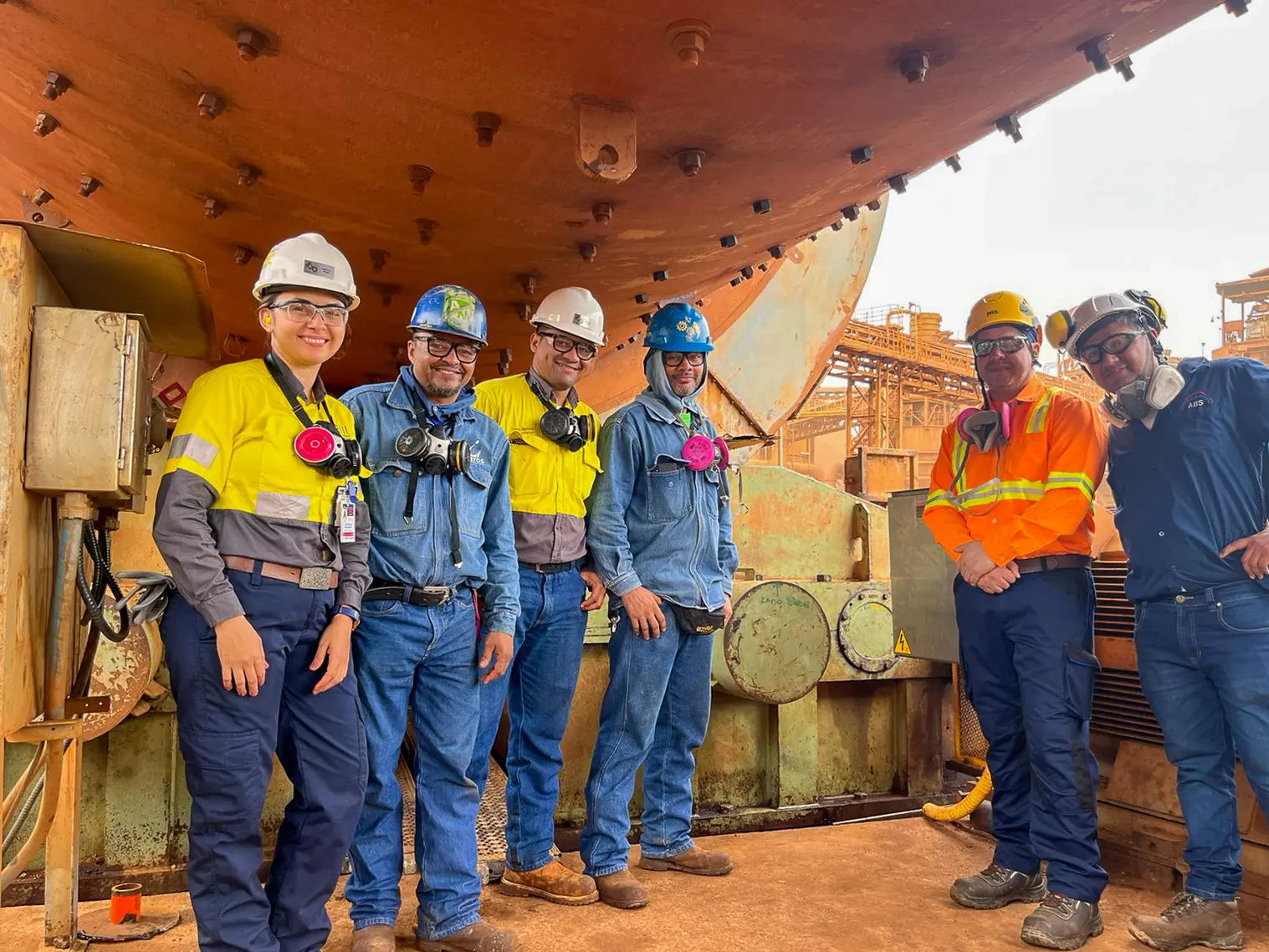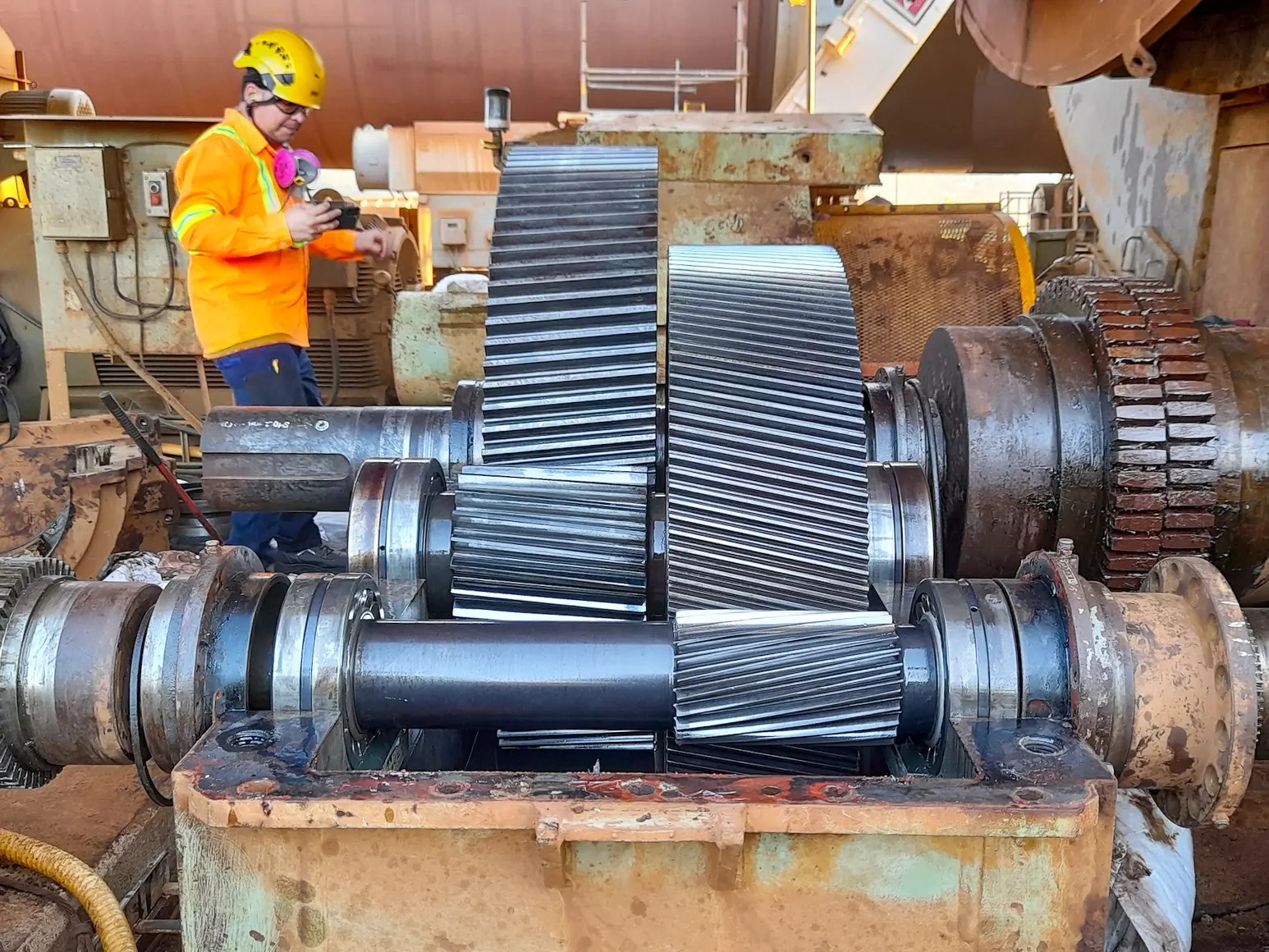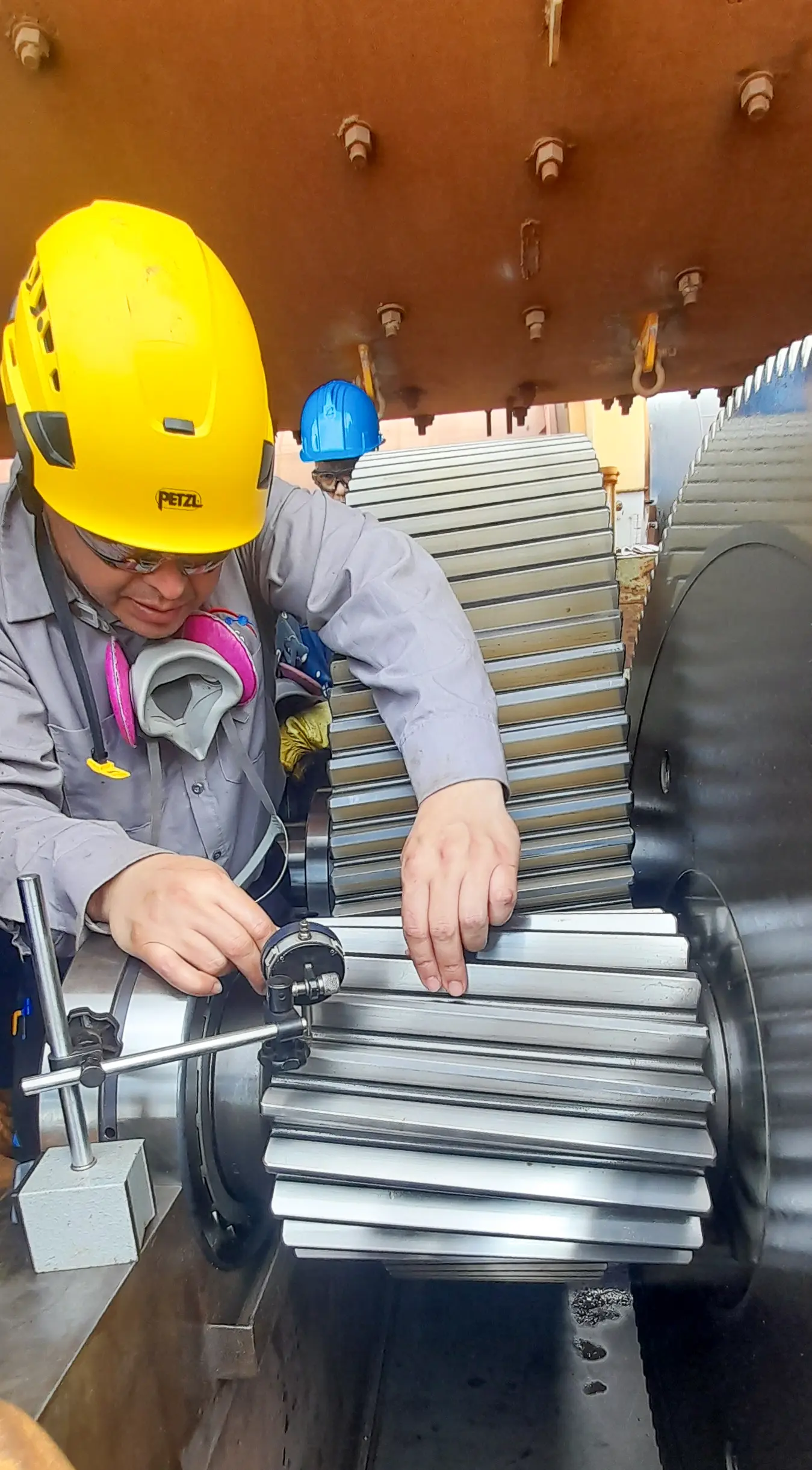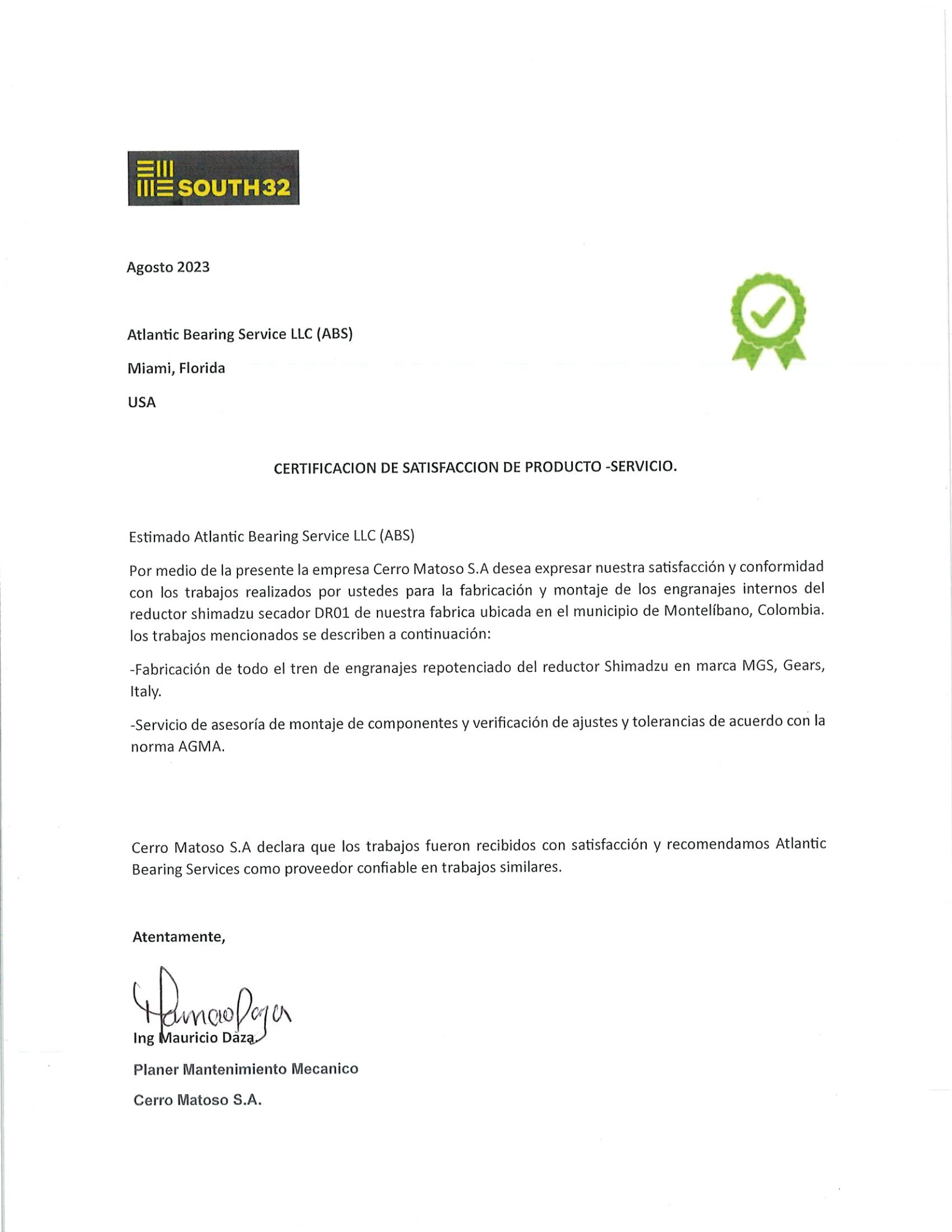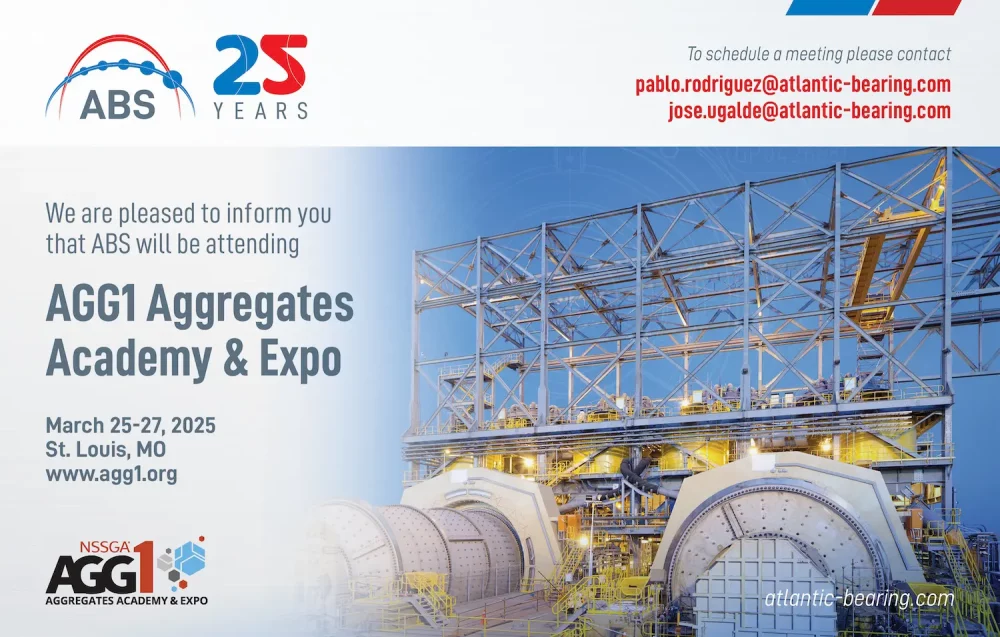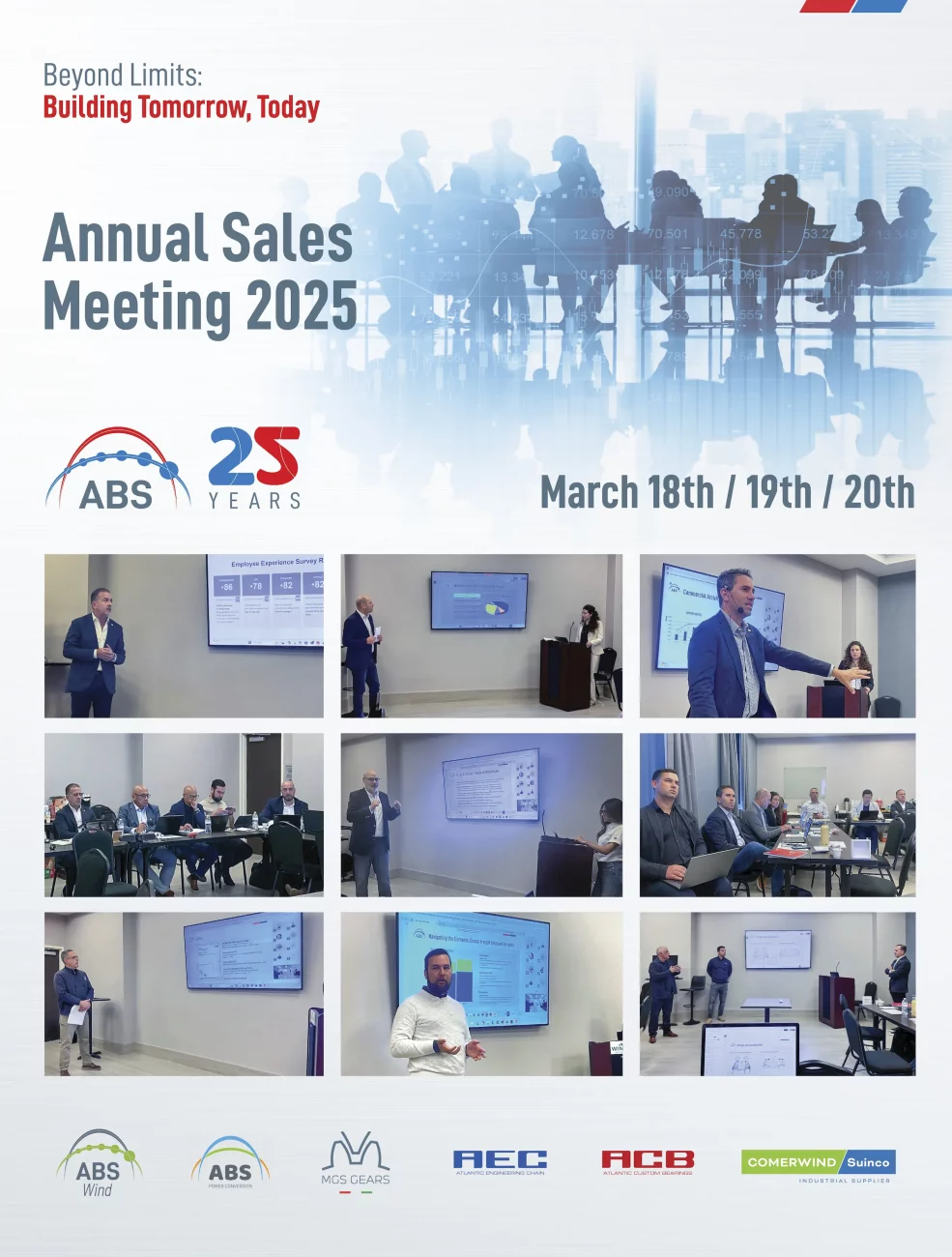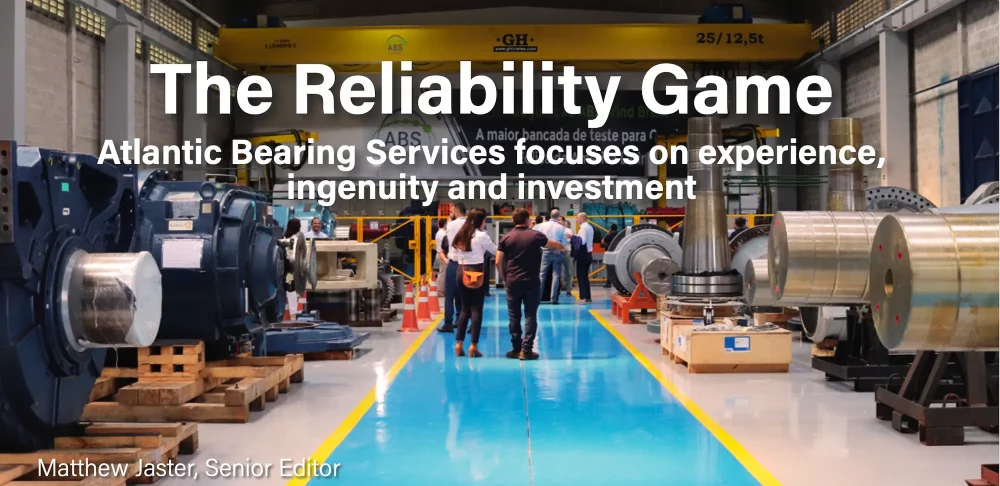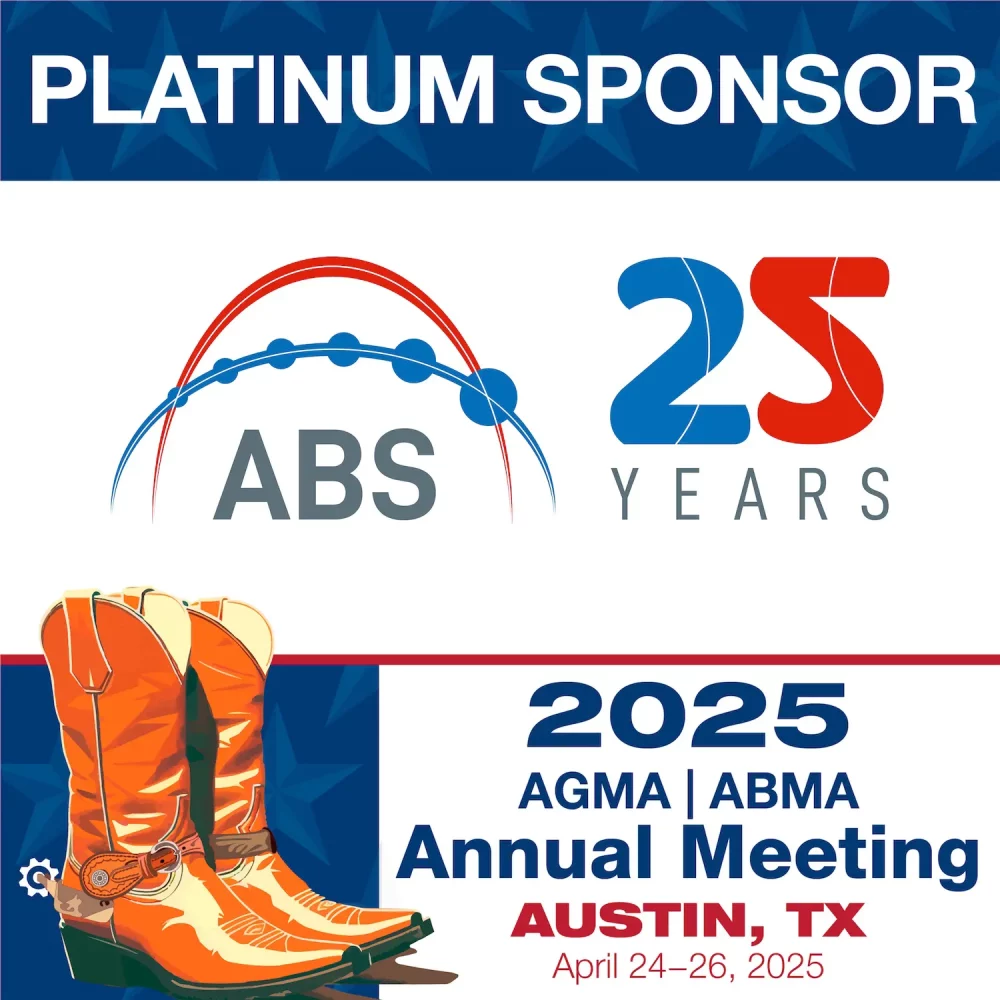See the project on ABS Newsletter pdf
See the project on ABS Newsletter pdf (spanish version)
ABS has manufactured and upgraded a new MGS gear train for the Shimadzu gearbox that drives the DR01 dryer, and coordinated its assembly and commissioning on-site in compliance with the AGMA standard.
South32 is globally recognized as one of the leading companies in the mining-industrial sector. In the municipality of Montelíbano, Colombia, it operates the Cerromatoso mine, which is counted among the largest open-pit ferronickel mines in the world.
The relationship between ABS and Cerromatoso dates back some time. Recently, ABS has collaborated once again on an ambitious project, meeting the established standards of time and quality. Thanks to this joint effort, ABS has been recognized with the Certificate of Satisfaction and Recommendation as a trusted provider for developments related to power transmission.
The Shimadzu gearbox, responsible for moving the DR01 dryer of Cerromatoso, showed severe wear problems. These issues manifested in the gears in the form of damage to the working flanks, micropitting, macropitting, spalling, and fractures in the tooth below the hardened layer, and in different stages of the reducer.
After a thorough analysis of these failures, ABS proposed the design and manufacturing of a revamped MGS gear train.
Given the critical importance of the reducer in the production process, it was essential to minimize execution times. This challenge could only be overcome thanks to the high level of demand, dedication, and effort of Maurizio Stucchi and the entire team at MGS Gears & Gearboxes in Italy, combined with the excellent coordination and advice of our local engineers in Colombia, Diego Soler and Allan Navarro. Together, we managed to complete the development and deliver it within the established timeframe, exceeding quality expectations.
Subsequently, in coordination with the Cerromatoso maintenance team, the assembly was planned and carried out over a period of 6 days. The excellent collaborative atmosphere between both teams during this process is noteworthy. The intensity, precision, and attention to detail were essential to meet the adjustments and tolerances required by the AGMA standard.
